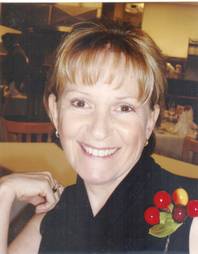Wednesday, March 18, 2009 | 6:54 p.m.

Stefani Evans
Like many American genealogists, I concentrate on United States records.
The reasons for my centrism are mostly practical — I can't afford the time or expense of extensive foreign research trips, and I don't know enough about the location, the available records, or the language to efficiently conduct the research. For these reasons, I choose to hire on-site professional genealogists when research leads me to a foreign country. But I was stymied by my great uncle.
Family lore said my paternal grandmother's brother emigrated from Europe to Buenos Aires in the early 20th century, and that he died there in the mid-1950s. I could not research him in Argentina, and I was unable to find a professional genealogist I could hire in Buenos Aires. However, a few years ago I had the opportunity to visit Buenos Aires. I wanted to make the most of my one week in the city as a tourist and as a genealogist. My curiosity as a genealogist initially won, so the day we arrived in Buenos Aires my husband and I visited a large cemetery that indexed its graves only by section number. After wandering up and down, row upon row, for more than 20 minutes I stared at the face of the man who was most probably my great uncle. The memorial portrait on his headstone so strongly resembled my grandmother that I knew who he was even before I read his name.
To Ronald Horne, memorial portraiture is a calling. His book, "Forgotten Faces – A Window Into Our Immigrant Past," features more than 350 images of memorial portraits. Horne's Web site cites Lisa Montanarelli who wrote, "A memorial portrait is a photograph displayed on a tombstone, portraying the deceased as he or she appeared in life. At the family's behest, an artisan fashioned a photograph from gold, platinum and iridium alloys and fired it onto an enamel surface."
In an interview with the San Francisco Chronicle, Horne noted that the tradition "originated in France in 1854 but [was] popularized and perfected by Italians. The biggest fans of this working-class art form were southern Europeans, Jews from Eastern Europe and Latin Americans." I thank Mr. Horne for his permission to quote from his Web site.
My limited time in Buenos Aires precluded me from obtaining the man's death certificate; the multi-step process involves finding the correct bureau, applying in person, and returning weeks later to retrieve the certificate. I was able to visit the Centro de Estudios Migratorios Latinoamericanos (CEMLA, Center for Latin American Migratory Studies), which maintains a database containing information for about 75 percent of Buenos Aires immigrants between 1882 and April 1929. For $8 (eight Argentinian pesos), a staff member printed a list of 153 men of my grandmother's surname who immigrated during those years. Out of the 153, one who entered the country in 1906 was likely the man in the cemetery and was possibly my grandmother's brother. My grandmother also emigrated in 1906.
I do not have death records that could prove that the man in the Buenos Aires cemetery shares parents with my grandmother, but I can make a case that it is so. His name and age on family photographs and in family lore correspond with the name and age of the man in the Buenos Aires cemetery. My father's siblings maintained that their mother's brother in Buenos Aires sent letters regularly until the early- to mid-1950s. Photos of my grandmother's brother as a young man strongly resemble the memorial portrait of the 70-year-old buried in Buenos Aires, who in turn bears an uncanny resemblance to my grandmother. But most of all, I have my mother's astonished comment: "He looks just like Chuck [my father] would have looked if he'd gotten old."
Stefani Evans is a board-certified genealogist and a volunteer at the Regional Family History Center. She can be reached c/o the Home News, 2360 Corporate Circle, Third Floor, Henderson, NV 89074, or [email protected].

Join the Discussion:
Check this out for a full explanation of our conversion to the LiveFyre commenting system and instructions on how to sign up for an account.
Full comments policy